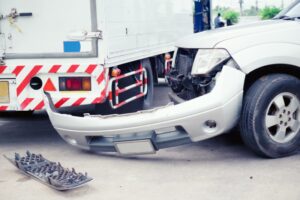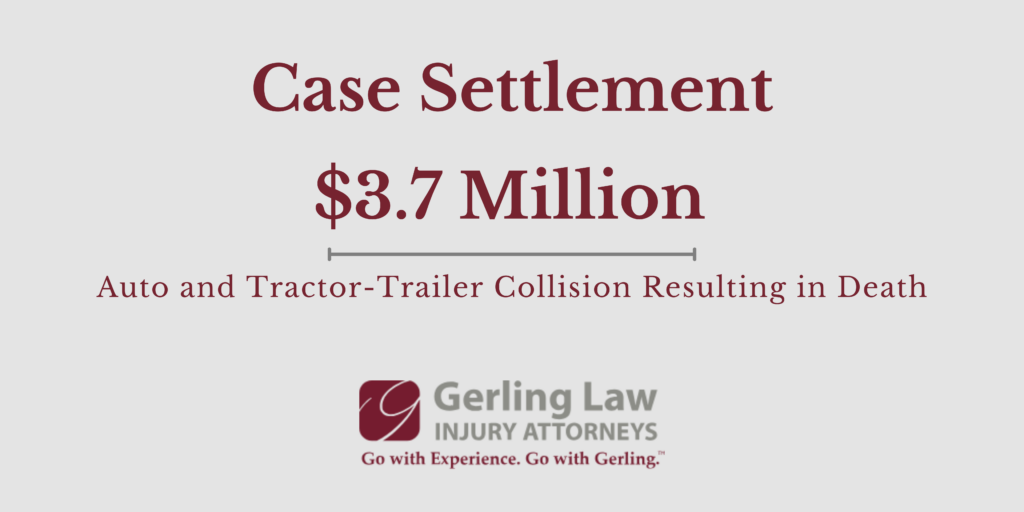
Commercial trucks need more space to complete turns than drivers may realize. When the truck driver, or another driver, does not understand the truck’s need for space, it can lead to severe accidents. If you were involved in a truck wide-right turn accident and suffered damages, you may be able to pursue legal action against the at-fault party. But figuring out who is at fault is rarely clear when it comes to truck accidents.
Wide-Turn Truck Accident
A wide-turn truck accident can be a serious accident for all parties involved. These types of accidents occur when a truck driver attempts to make a right turn, and the truck’s size and length cause the driver to swing out wide to the left before making the turn. When a truck turns right, it may need two full lanes, leading to a dangerous situation for other drivers. They may not notice the truck turning, or they may be unable to move in time. Accidents may also occur because the truck driver is improperly trained to prepare for wide turns.
A common scenario in a wide-right-turn accident happens when a passenger vehicle drives too close to a truck while turning. The truck driver may not use their turn signal, or the truck driver may not notice the car in their blind spot. Either way, the truck driver’s failure to use reasonable care results in an accident.
Who Is at Fault in a Wide Right-Turn Truck Accident?
In a truck wide-right-turn accident, fault is not always straightforward. While the truck driver may be the most obvious party to blame, other factors may be at play.
One common factor is the position of the other vehicle. If a car attempts to pass the truck on the right while the truck is making a wide-right turn, the car may be at fault for not giving the truck enough space to complete the turn safely. In this situation, the driver may be cited for failure to yield or reckless driving.
Another factor is the positioning of the truck itself. If the truck driver fails to signal their intention to make a right turn or fails to check their blind spots before initiating the turn, they may be at fault for the accident. Additionally, if the truck is too long for the turn, the driver should have taken a wider turn or sought an alternate route to avoid causing an accident.
Finally, there may be a scenario where both parties are partially at fault. For example, if the car driver attempts to pass the truck on the right while the driver fails to signal or check their blind spots, both parties may share responsibility for the accident.
In any case, determining fault in a truck wide-turn accident can be a complex process. It is important to consult with an experienced attorney who can evaluate the specific circumstances of the accident and help you understand your legal options.
What If Both Parties Are At-Fault?
In Indiana, comparative fault, or comparative negligence, is an important legal concept. This concept helps determine how much a plaintiff can recover in damages in a personal injury case when both parties share some responsibility for the incident.
Under Indiana law, a plaintiff’s recovery is reduced by the percentage of fault assigned to them.
Comparative fault is based on the principle that both parties involved in the accident may have somehow contributed to the injury or damage. It recognizes that fault is not always clear-cut, especially in wide-right-turn truck accidents.
Indiana uses a modified comparative fault system, which means that a plaintiff can only recover damages if they are found to be less than 51% at fault for the accident. If a plaintiff is found to be more than 50% at fault, they are not entitled to any damages.
In Indiana, the court determines the percentage of fault for each party involved in the crash. The court considers factors such as the actions of each party, relevant laws or regulations, and the extent of the damages.
For example, if a truck is too long for a particular right turn, and the driver should have sought an alternate route to avoid causing an accident. In this case, the percentage of fault assigned to the truck driver could be 70%. At the same time, if the other driver did not give the truck enough space to complete the turn safely, the court might assign 30% fault to the other driver.
Truck Wide-Right-Turn Accident Case
Determining whether you have a truck wide-right-turn accident lawsuit will depend on the specific circumstances of the accident and the extent of your damages. If you were injured or suffered property damage due to the accident, you could pursue legal action against the at-fault party.
To determine whether you have a valid claim, consult with an experienced personal injury attorney right away. Your attorney can help calculate the damages you may be entitled to, including medical expenses, lost wages, property damage, and pain and suffering. Further, an attorney can help you identify all potential defendants and pursue a claim against each responsible party.
It is important to reach out to an attorney as soon as possible because there is a statute of limitations for filing a personal injury lawsuit. A statute of limitations means you must file your claim in court within a certain time. In Indiana, the statute of limitations is two years. If you miss this deadline, you may lose your right to seek compensation for your injuries.
Truck Wide-Right-Turn Accident: Who’s At Fault?
If you need an attorney after a truck accident, call Gerling Law Injury Attorneys. We have over half a century of experience representing clients injured in truck accidents. We have represented thousands of people, and we have recovered more than $500 Million for our clients. Gerling Law wants you to know you are not alone. We have substantial experience navigating truck accident claims at every stage of the lawsuit. Contact us today.


